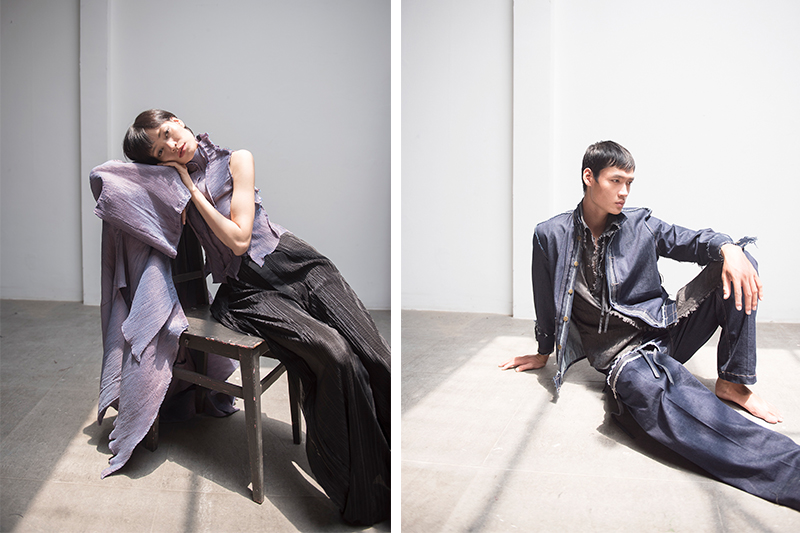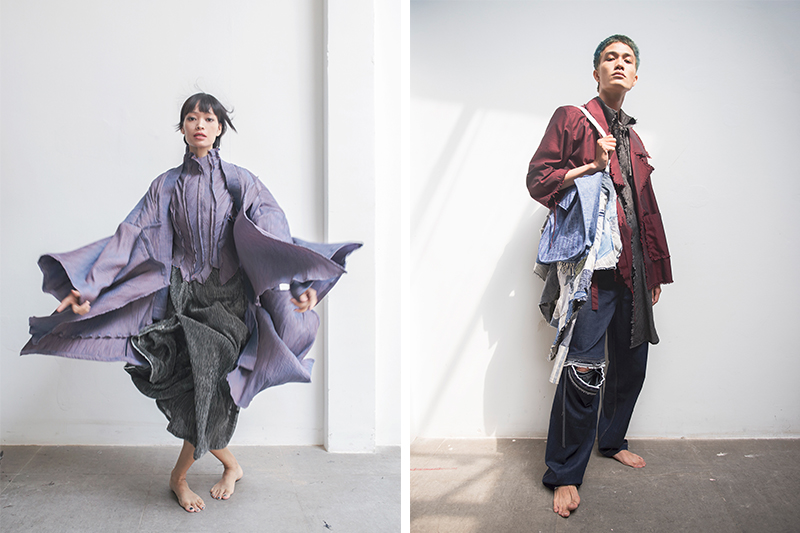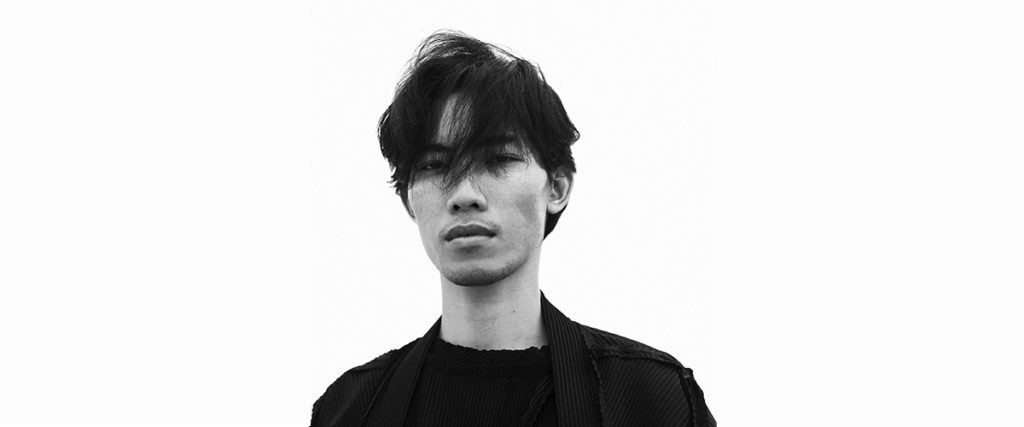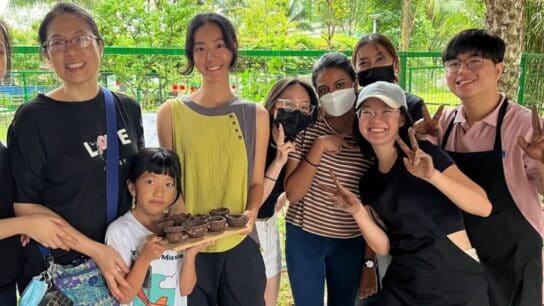An agenda-setting fashion brand blazing a path in Vietnam with bold, experimental designs, independent thinking and a sustainable focus, Moi Dien is a different kind of label in more ways than one.
Tom Trandt’s fashion designs were exhibited at the Metropolitan Museum of Art in New York City when he was still a junior at Parsons School of Design. Now based back home in Saigon, his flagship brand Moi Dien has been featured in fashion magazines such as Harper’s Bazaar, Elle and L’Officiel and he has just been selected as one of 16 designers to take part in the International Fashion Showcase 2019 in London. Read on to find out why, for him, the future lies in changing the conversation.

Original and subversive from the get-go, Moi Dien (“moi”: lips, “dien”: crazy in Vietnamese) is a brand of and for those looking for an edge. With a design philosophy that evokes avant-garde Belgian schools and Japanese designers, Tom Trandt’s creations were developed specifically to fill a niche in Vietnam – one that appealed to those who wished to experiment with what they are wearing. “I try to look at an object from different angles to find the most interesting things about he, she, or it,” he explains of his processes. “I give a lot of room for imagination in my collections.” Steeped in knowledge about fine arts, architecture, and biology, he is a skilled fashion designer at every single step of the creation process, and “intensely curious about how things are made: the technicality, the craftsmanship, the fastidious detail.” Each garment, belying their fluidity and spontaneity, is a highly technical project, one that has its own story sewn in with every stitch.

“In high school, I went to after-hours art classes to prepare for architecture school. Somewhere along the line, I knew that fashion would suit me better,” he remembers. That took him to New York and one of the most famous fashion schools in the world. “The thing about Parsons is that we were allowed to experiment. My professors let me do everything I wanted to do, with one condition that it had to have meaning. As long as I have meaning behind my work, then I can do anything.”

Coming home to launch his own label, Tom has continued to see fashion as a form of individual expression. “The first thing about Moi Dien is that it’s very free. There are a lot of proven formulas for the local market and it’s safe to follow those for revenue. With Moi Dien you can see that we’re always pushing the boundaries: how we present ourselves, the Vietnamese names of our products, how they’re made, how they’re worn, our ‘non-model’ models.” As a consciously environmentally friendly fashion label, his business also has its own perspective when it comes to sustainable fashion. “We don’t want to be labelled a sustainability brand, we want to be a responsible brand. There are many ways to think about sustainability; we want to pick one thing and do it very well. One thing we’re doing is to eliminate the waste by upcycling, using leftover fabrics before they become waste. That gives us a continuous stream of materials and the products are unique and full of character. We also aim to be more innovative and creative in terms of packaging, making the packages into something nice enough that you can carry them out onto the streets.”

All this places him apart from the more prevalent mass fashion making its mark in Vietnam right now thanks to a huge upswing in local production. “Sadly, most fashion businesses here are not run by designers but businessmen who think fashion is just a lucrative way to make money.” Being a designer first and business person second, however, isn’t always easy. “It is hard because designers tend to be very sensitive. It’s hard to say no, it’s hard to manage people, it’s not our nature to be a leader. But running a business will also give you more room to be creative.”
With a firm presence on social media (38,000 followers on Facebook and Instagram combined @moidienstudio) Moi Dien’s message and journey continues. “We’re very supportive of the LGBT community, as they have been of us. Recently we gave our Instagram to a group of LGBT friends for one day. Whatever they want to show the world, it’s their space,” he says. Currently available online, the appeal of the brand, along with its ambassadors, is more than screen-deep. With plans to open a brick-and-mortar store in the future, Tom says, “online and offline are no longer that different. We’re still a brand. Whatever we’re doing, they’re still things we want to get ahead of before anyone else does. If those are trends, we’ll be the one who breaks them.”




